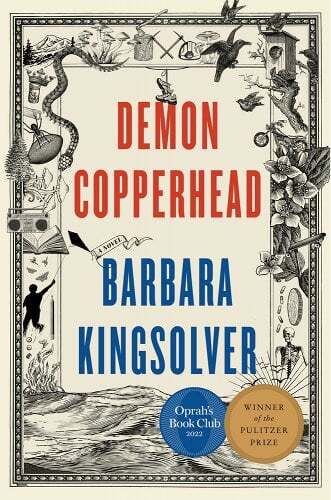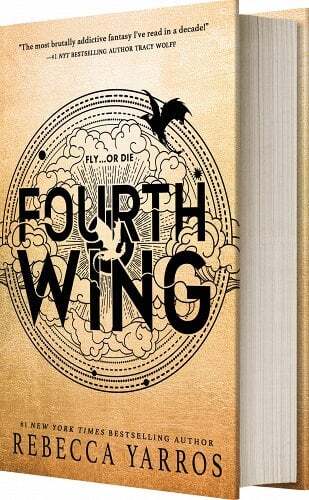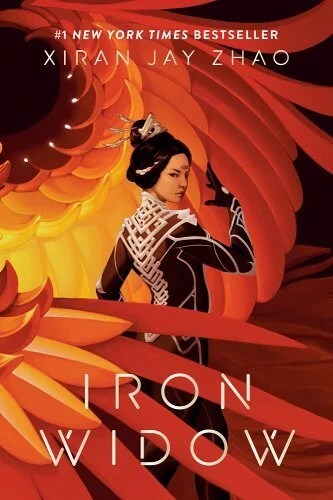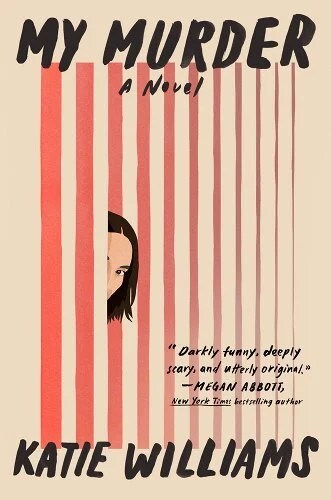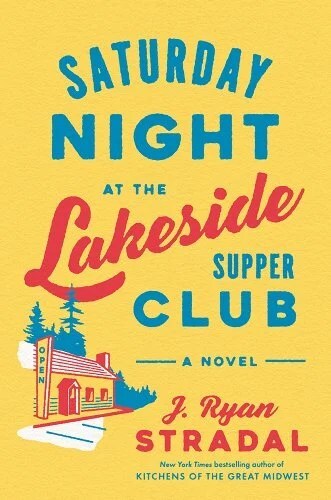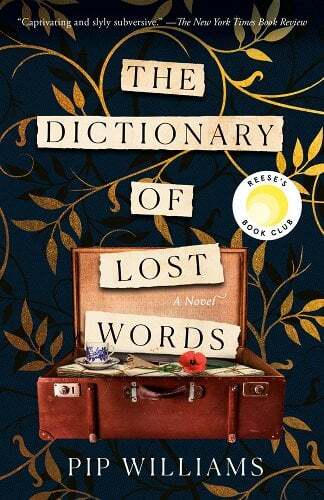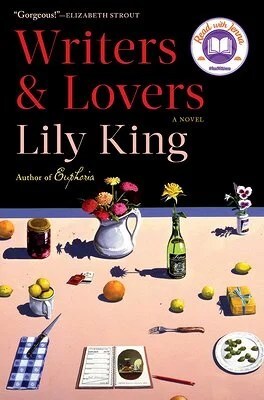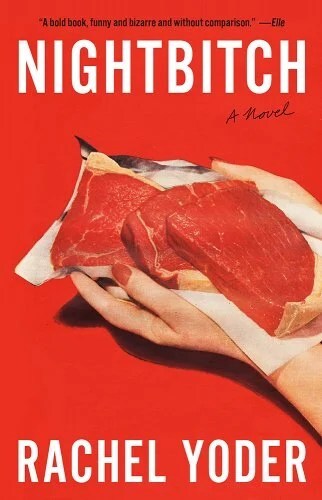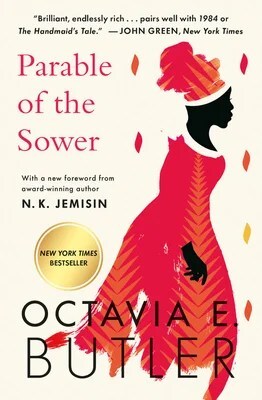April Davila's Blog, page 5
April 10, 2024
The Dream of Writing a Novel


In the quiet, early hours of the morning, or late at night when the world is asleep, many of us find ourselves indulging in the dream of writing that novel. You know, that one that’s been simmering in the back of our minds for years. We imagine our stories nestled on bookshelves between J.K. Rowling and Ernest Hemingway, touching the hearts and minds of readers around the globe. But how many of us actually take the leap from dreaming to doing?
The Dream is More Common Than You ThinkI recently came across a report on a survey that said more than half of Americans believe they have a novel in them. That actually wasn’t all that surprising to me, but the report when on to say that only a small fraction of these hopefuls ever put pen to paper (or fingers to keyboard). A mere 15% have started writing. Of those, 6% have made it halfway through and only 8% have crossed the finish line with a completed manuscript.
Why the stark drop-off? The hurdles are many: writer’s block, lack of time, perfectionism, and perhaps the most daunting of all, the fear of the unknown path that lies beyond the writing itself.
Bridging the Gap Between Aspiration and ActionHow do we bridge this gap? How do we transform the dream into a tangible, living, breathing novel? You probably won’t be surprised to learn I have thoughts.
Establish a Writing Routine
Consistency is key. Whether it’s an hour every morning or a dedicated weekend writing marathon, find what works for you and stick to it. Remember, every word written is a step closer to your goal.
Join a Writing Group
Writing doesn’t have to be a solitary endeavor. Joining a community of writers (like my Mindful Writing Community) can provide the support, feedback, and motivation you need to keep going. Whether it’s online or in-person, connecting with fellow writers can make a world of difference.
Educate Yourself
Writing a novel is an art, but publishing it is a craft. Invest time in learning about the publishing industry, whether through online courses, webinars, or books on the subject. Understanding the business side of writing can demystify the process and empower you as an author.
Embrace Rejection
Rejection is a rite of passage for authors. It’s not a sign of failure but a step in the journey. Each rejection brings you closer to the right agent, the right publisher, and ultimately, the right readers. Remember, if you’re not getting rejected, you’re not putting yourself out there enough.
The Reality of PublishingThe reality is that writing and publishing a book is a complex, often challenging process. Remember that even just starting your novel puts you ahead of 85% of the population.
Despite the challenges, the dream of writing a novel is absolutely attainable. With the right mindset, resources, and support system, what starts as a dream can become a beautifully bound reality on a bookshelf.
The Literary Limelight AwaitsFor those of you contemplating the leap from dreamer to doer, remember this: every great novel began as an idea. It’s the courage to start, the persistence to keep going, and the willingness to learn from each stumble that transforms that idea into a story that can captivate the world.
So, to all the dreamers out there, let this be your sign. Your story matters.
March 20, 2024
How to Turn Your Half-Finished Novel into a Completed Manuscript: Join Our Webinar!

If you’re struggling to finish your novel, I understand. I’ve been in your shoes, and I know how challenging it can be to push through the obstacles and complete your manuscript. You are not alone in this journey. Many aspiring authors face the same challenges, but the good news is that there are proven strategies to help you overcome these obstacles and complete your novel.
Join Our Webinar and Learn from a Published AuthorI’m excited to announce the return of our popular webinar series, “How to turn your half-finished novel into a completed manuscript.” Led by a published author with years of experience helping clients finish their drafts, this one-hour webinar is designed to provide you with the tools and insights you need to transform your half-finished novel into a polished manuscript.
In the first five minutes of the webinar, you’ll learn about a personalized game plan that has helped countless clients finish their drafts. From there, we’ll dive into the five essential things you need to do and understand to complete your novel:
Prioritize your writing and tackle writer’s blockUnderstand the structure of your novelCreate compelling scenes that captivate readersCraft powerful prose that communicates precisely what you meanNever, ever, ever give upLive Q&A and Bonuses for AttendeesThroughout the webinar, we’ll explore these topics in depth, providing you with practical advice and real-world examples. We’ll conclude with a live Q&A session, where you can bring your questions and get personalized guidance from our expert.
As a special bonus for those who attend the live webinar, we’ll be offering some exciting free resources to help you on your writing journey. Don’t miss out on this opportunity to take your writing to the next level!
Choose the Date and Time That Works Best for YouTo make it easier for you to attend, I’m offering three different dates and times for the webinar:
March 26 at 3 pm PTMarch 29 at 12 pm PTApril 3 at 1 pm PTIf you can’t make it to the live session, don’t worry – we’ll send you a replay link afterward.
However, we highly recommend attending the live event to take advantage of the Q&A session and the special bonuses.
Writing a novel is hard work, and there’s no easy shortcut to success. But with the right strategies and support, you can expedite your journey to a finished manuscript. Join us for “How to turn your half-finished novel into a completed manuscript” and take the first step toward realizing your dream of becoming a published author.
Sign up now and get ready to transform your writing!
March 6, 2024
Librarians: The Unsung Heroes of Our Communities
Last week, I picked up my son from school and he sprung one of those last-minute requests on me, like kids do: “Mom, I need a book on Leonardo da Vinci – by tomorrow.” The timing couldn’t have been worse. We had a long drive home and would only just get there in time for a club he’s a part of. We had exactly zero time to be browsing around the library for books. “What do you mean, tomorrow?”
But then, an idea: “Hey Siri, call the library.”
Library to the RescueEnter Mark, our local librarian and unsung hero. A quick call to him with our desperate plea for books on Leonardo da Vinci set a plan into motion. “What kind of books?” Through the car’s speaker, my son shared that he needed ones with pictures of da Vinci’s inventions. And just like that, Mark was on the case.
By the time we arrived, a stack of carefully selected books awaited us. We breezed in, checked out the books, (thanked Mark, several times) and got out of there in time to get my boy to his club. Conclusion: librarians are the best.
More Than Just BooksThis experience was a powerful reminder of the library’s value beyond just books. I love them so much. Librarians, like Mark, are a treasure trove of knowledge, ready to assist with any query. They were our Google before Google, solving dinner table debates and finding resources for any project.
I cannot sing the praises of libraries and librarians enough. They provide an invaluable service, giving access to a world of knowledge and saving families like mine thousands of dollars. For those of us with an insatiable appetite for reading, libraries are a lifeline.
I’m filled with gratitude for public libraries and the dedicated librarians who make them so welcoming. Perhaps in another life, another career path, I could have been a librarian, happily ensconced among the endless rows of books.
A Moment of AppreciationIf you haven’t fully embraced your local library as a resource, I urge you to do so. Librarians like Mark are there to help, guiding us through the labyrinth of information with a smile and libraries are more than just buildings filled with books; they are community hubs powered by the incredible librarians who dedicate their lives to serving others. Let’s take a moment to appreciate them and the invaluable services they provide.
That’s my public service announcement for the day. Now, go introduce yourself to your local librarian.
February 21, 2024
Celebrating Three Years of “142 Ostriches” (and some exciting news)


Three years ago, Kensington Books released my debut novel, “142 Ostriches.” It was February of 2020 and if you didn’t read any of the great reviews it’s probably because there was another story dominating the news cycle… Because of COVID I didn’t get to do my official book tour, but I met so many wonderful book clubs through Zoom. If you were among those early readers – thank you!
Haven’t read it yet? Get your copy here!Today, as we celebrate the third anniversary of my first “book baby,” I’m thrilled to announce an exciting new chapter.
From Page to ScreenI’m delighted to share that “142 Ostriches” is taking its first steps toward the silver screen. The novel is currently in preproduction for a film adaptation and I thought, just for fun, I’d share some of the concept art the filmmakers put together. (Spoiler alert – these images depict some of the most important moments in the story, so if you haven’t read it yet, maybe stop here and go get your hands on a copy.)





 A Note of Gratitude
A Note of GratitudeIt’s so exciting to watch the story take on a new life, in a different format. It’s still in the early stages, but I promise to keep you updated with behind-the-scenes looks, casting news, and more as we embark on this cinematic journey.
Thank you for your love, enthusiasm, and support over the past three years. It means the world to me.
February 14, 2024
The Science of Reading for Inspiration
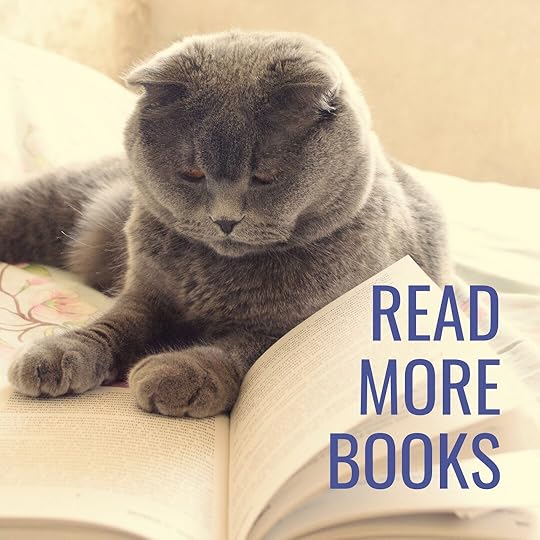

In the labyrinth of creativity, every writer, at some point, finds themselves at a crossroads, staring down the branching path ahead, not sure which way to. It’s a place where words refuse to flow, ideas seem as elusive as shadows, and motivation is but a distant memory.
In a recent conversation with a fellow writer in my Sit Write Here online writing community, a question came up: when I’m feeling stuck and need inspiration, what do I read to find my way again?
A Surprising AnswerThe answer, surprisingly, isn’t rooted in a specific genre or a list of curated titles designed to unlock the mind’s hidden chambers. Instead, it’s about the simple, transformative act of reading itself. It doesn’t matter what you read; the key is to just keep reading.
Imagine this: you’re feeling stuck, your scree as blank as your mind. Reluctantly, you reach for a book—any book that lies within arm’s reach. Within ten pages, a word, a sentence, or even an idea jumps out at you. It’s as though the universe conspired to place the answer directly in your path. While it’s tempting to attribute this inspiration to some form of literary magic, the reality is far more profound.
It’s Science, Y’allThis phenomenon is not the result of magic but of the mind’s intricate workings. Subconsciously, we know what we’re seeking, even if we can’t articulate it.
Our minds are tireless seekers, continuously processing vast amounts of information, making connections between seemingly disparate ideas, and relentlessly searching for that elusive piece that will complete the puzzle. This internal process is both mysterious and wonderfully efficient, capable of drawing parallels and generating insights from the most unexpected sources.
When we engage in reading, we do more than just absorb information; we offer our subconscious a rich tapestry of ideas, narratives, and perspectives to sift through. Each word and sentence acts as a potential key, unlocking doors to new thoughts, solutions, and inspirations. Reading becomes a form of mental exploration, where every page turned is a step into the unknown, a leap towards discovery.
This exploratory process isn’t linear or predictable. The subconscious mind does not follow a straightforward path but rather meanders, takes detours, and leaps across cognitive landscapes. It is in this seemingly chaotic journey that the magic happens. The very act of reading without a specific goal or direction allows the subconscious the freedom to explore, to play, and to find what we didn’t even know we were looking for.
Reading Is Part of Your JobSo, if you find yourself mired in a creative quagmire and you need inspiration, remember that the solution might just lie on your bookshelf, waiting to be discovered. As a writer, your job isn’t just to write but to read—to immerse yourself in the thoughts, experiences, and imaginations of others. In doing so, you’ll find that the inspiration you seek is closer than you think.
February 7, 2024
Dealing with Overwhelm
If you know me at all, you know I don’t believe in “writer’s block.” It’s just a catch-all phrase we use to talk about the various reasons we’re struggling with our writing, and one of the most common things I see aspiring authors struggle with is overwhelm, which makes perfect sense to me.
When faced with a seemingly insurmountable task of transforming thoughts into words, the mind can become cluttered, ideas can elude grasp, and the blank page can morph into an intimidating void.
Why We Face Feelings of OverwhelmOne common source of this overwhelm is the self-imposed burden of perfectionism. Aspiring authors often strive to produce flawless prose, meticulously crafted sentences, and captivating narratives right from the start. The weight of these expectations can be paralyzing, leaving writers unable to put pen to paper or fingers to keyboard. The fear of producing anything less than a masterpiece becomes a roadblock to progress.
Additionally, the vastness of the creative landscape can be overwhelming. The limitless possibilities of storytelling, the sheer volume of existing works, and the constant comparison to accomplished authors can be daunting. The more writers delve into the world of literature, the more they may feel a sense of insignificance or a daunting realization of how much they have left to learn and achieve.
Find a More Manageable Amount of WhelmFirst and foremost, it is crucial to embrace imperfection. Writing is an iterative process, and the first draft is rarely a flawless masterpiece. Allowing oneself to write imperfectly, with the understanding that revision and refinement will follow, is liberating. Granting permission to make mistakes opens up the creative flow and alleviates the fear of failure.
Setting realistic goals and establishing a writing routine can also help mitigate overwhelm. Breaking down the writing process into manageable tasks and allocating dedicated time for writing creates structure and prevents the feeling of being lost in a vast expanse of possibilities. Whether it’s a daily word count, a specific writing session duration, or a chapter outline, having tangible objectives brings focus and direction to the creative endeavor.
Seeking support and connection with fellow writers can be invaluable. Joining writing groups (like the one I lead every Wednesday), attending workshops, or participating in critique circles can provide a sense of community and encouragement. Sharing experiences, discussing challenges, and receiving constructive feedback from peers who understand the struggles of the craft can help aspiring authors overcome the isolating nature of writer’s block.
Furthermore, engaging in activities that promote relaxation and rejuvenation can combat overwhelm. Taking breaks, practicing mindfulness or meditation, and pursuing other creative outlets can replenish mental energy and stimulate fresh ideas. Stepping away from the work momentarily allows the mind to breathe, gain perspective, and return with renewed vigor.
Lastly, it’s essential for aspiring authors to remember their passion and purpose for writing. Reconnecting with the initial spark that ignited your desire to tell stories can reinvigorate the creative spirit. Reminding yourself of the impact literature has had on your life and the potential impact your own work can have on others can reignite the motivation to push through the barriers of overwhelm.
Keep WritingKeep heart and remember that you are not alone. If you feel like you could use a little support (the kind of support that scrolling the internet isn’t quite providing) book a time to chat with me about my various coaching programs. If my services aren’t a good fit for where you’re at with your writing, I will happily point you toward other resources.
January 24, 2024
Remind Us What Your Character Looks Like
When you’re writing a story, be it fiction or non-fiction, it is critical that the reader be able to picture your characters. The more characters you have, the more important this is. If all I know about them are their names, they will be more or less interchangeable in my brain (which creates a lot of confusion in a story).
For instance: John, Bob, and Jason (which reminds me, you should always strive to be a little more creative with your names – wrote a post about that a while back). I need to know what they look like and I need you find subtle ways to remind me what they look like through the entire story. This is the part a lot of writers miss.
It’s not enough to tell me once that Bob is really tall. As a reader, I need you to remind me of it every chance you get by having him loom over shorter characters and bump his head on a low-hanging branch. The trick is in finding a balance. Here are a few tips and tricks I’ve collected over the years:
Show, don’t tell: Instead of explicitly stating a character’s appearance, integrate it naturally into the story through actions, interactions, and dialogue. For example, you can have other characters react to the character’s physical features or use descriptive language when the character interacts with their environment.Character self-reflection: Create moments where characters reflect on their own appearance or notice specific physical features. This can be done through internal monologues, introspective scenes, or personal thoughts, providing a subtle reminder to the reader.Character comparisons: Introduce new characters or objects that resemble or contrast with the appearance of existing characters. By drawing similarities or differences, readers can recall the physical features of the character in question.Character interaction: Utilize character interactions to remind readers of physical traits. For example, another character might touch or compliment the character’s distinctive curly hair, allowing the author to reinforce that trait in the reader’s mind.Narrative context: Incorporate the character’s appearance into the narrative context. If the character has a distinct scar, for instance, mention it when it becomes relevant to the story, such as during a fight or a moment of vulnerability.Non-visual senses: Remind readers of a character’s appearance by engaging senses other than sight. Mention the character’s distinct scent, voice, or unique physical qualities that are associated with their appearance (like soft skin, for instance).Emotional reactions: Connect emotional reactions or feelings to the character’s appearance. For example, describe how a character’s beautiful eyes evoke specific emotions in others, reminding the reader of their appearance while also conveying emotional depth.Remember, it’s crucial to find a balance between reminding readers of a character’s appearance and allowing them to use their imagination. Provide enough details to guide their mental image, but also leave room for interpretation and individual reader perception.
January 17, 2024
The Importance of Story Structure
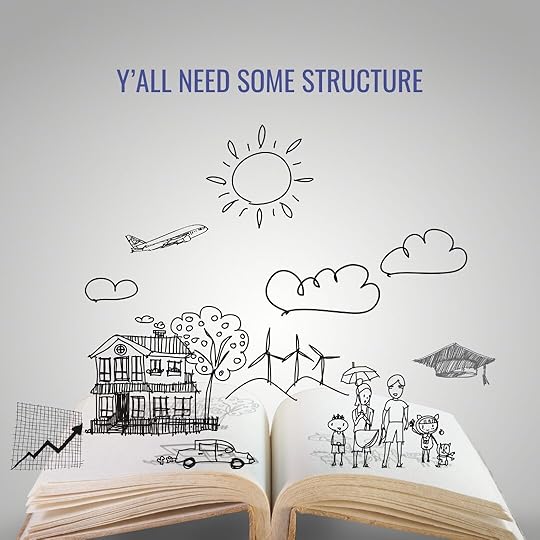
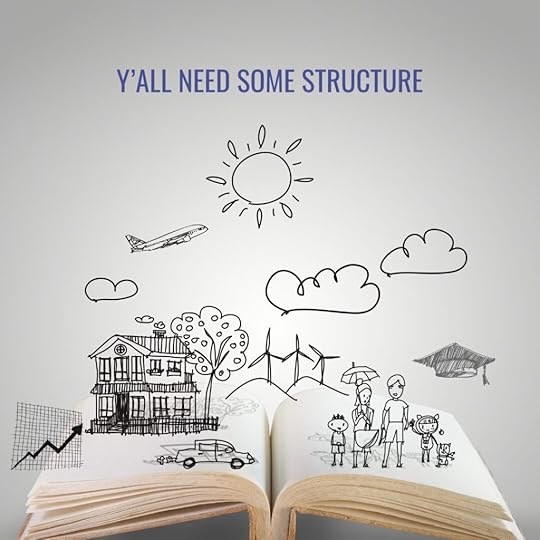
If you’ve been following my journey recently, you know that I’ve delved back into an old project, one I initiated during NANoWriMo in 2019. No outline, no plan—just an idea and 50,000 words of what I can only describe as a hot mess. As I navigate through this creative endeavor, it’s become evident how crucial structure is in the storytelling process.
When people hear the term “story structure,” their minds often gravitate towards the traditional three-act structure, particularly in the realm of fiction. The hero’s journey, inciting incidents, and climactic moments (what I consider plot) are commonly associated with this framework. However, in my experience, there’s so much more to story structure.
Finding Story StructureFor a fiction writer, especially one engaged in long-form storytelling, the concept of story structure expands beyond mere plot points. It encompasses the nuanced art of how you tell your story. This realization struck me while I was working on my second book, an epic tale spanning 250 years with a dual POV and a touch of magic.
Selecting which moments to highlight in a story of such magnitude proved to be a challenge. To overcome this, I turned to my bookshelf, examining some of my favorite books to discern different approaches to storytelling. What I discovered were seven fundamental story structures, each offering unique ways to convey a tale.
Different Story Structures for Different StoriesOne approach (that I call “basic story structure”) involves a straightforward first-person point of view, be it in the present or past tense for a story that unfolds linearly over time. This was method I instinctively employed in my first book, providing a natural flow to the story.
In contrast, my second book demanded a more intricate structure due to its expansive timeline. I settled on a timeline that jumped 10, 20, 30, 40, and finally 50 years between sections. Deciding on that framework clarified what should be included and what could be discarded, even if I found joy in writing it.
A structured approach allowed me to discern what truly mattered to the characters and the overall narrative. Enjoying the writing process is essential, but it doesn’t justify retaining every enjoyable scene in the final work.
Think Beyond the Hero’s JourneyStory structure is not confined to plotting the hero’s journey or adhering to a predefined three-act structure. It’s about the art of storytelling—how you choose to convey your narrative. Aspiring writers, take heed: master the nuances of story structure, and you’ll find your path to weaving captivating tales.
Cheers to the journey ahead!
January 10, 2024
How to Turn Your Half-Finished Novel into a Completed Manuscript

I hope the start of January 2024 has been treating you well so far. Today, I want to discuss a topic that’s close to every writer’s heart this time of year: turning that half-finished novel into a completed manuscript.
It took me eight years to finished my first novel, but my second novel (which was far more complex) took me only three years, and last January I started a story that I finished in just 12 months (granted, it was a novella, but still…). Point is, a big part of writing a novel is learning how to write a novel.
As a writing coach, I’ve made it my mission to help writers expedite this process. Art takes time, but it helps if you can avoid pitfalls and unnecessary detours on the journey to a finished manuscript.
In support of that effort, I’m offering a free webinar called How to Turn Your Half-Finished Novel into a Completed Manuscript. I’ll be giving the talk 4 times in the next week:
Thursday, January 11 at 12pm PTSaturday, January 13 at 2pm PTMonday, January 15 at 3pm PTWednesday, January 17 at 6pm PTIt’ll be the same presentation each time, so choose the one that works best for you and come learn what you need to do/understand to finish your novel in 2024.
PLEASE NOTE: This is not a gimmicky finish-your-novel-in-5-easy-easy steps kind of webinar. Writing takes work, and art cannot be put on a timeline, but I CAN shorten your path to a finished manuscript by sharing with you the most useful things I’ve learned along the way to becoming a traditionally published, award-winning author.
Key Steps to Finish Your Novel:
First, you’ll need to truly prioritize your writing and deal with writer’s blockThen, understand what kind of structure you’re using for your novelFill that structure with compelling scenes that keep readers readingTrain yourself to craft powerful prose that says precisely what you meanAnd never, ever, ever, give up.We’ll go into each of these items in detail and I’ll tell you how I learned to navigate each challenge. PLUS in the first 5 minutes I will share the strategy I use with my clients to help them create a personalized game plan for how they will finish that half-fished novel. I really want this webinar to be super useful to you so bring your questions about writing. If I don’t address them in my presentation, stay after for our live Q&A session and we’ll dig in together.
The joy of writing lies in the journey. By mastering these key elements, you can navigate the path to a completed manuscript with greater efficiency. I can’t promise you’ll finish your book in a month or a year, but I can promise to save you a lot of time on the path to publication. I hope you’ll join us.
Until then, happy writing, my friends!
December 20, 2023
Best Books of 2023

I read 52 books this year. Of those, I didn’t finish some of them (I’m pretty quick to put books down these days), and nine stand out as excellent reads.
These are the books that stayed with me, the ones I thought back on after I’d finished reading. They are the books I’m telling my friends about.
Here they are, in no particular order and with no regard to publication date.
The best books I read in 2023.
(each of the images below links to my affiliate account on Bookshop.org which means that if you buy a book using that link, you support this blog AND indie bookstores – win win!)
